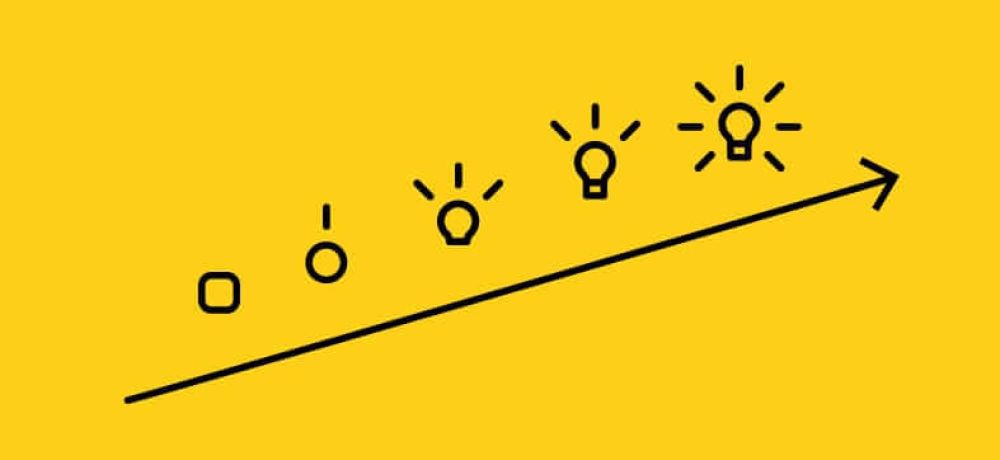
How to Motivate Innovation?
I do not know about you but I’ve heard a million times: intrinsic motivation is good, extrinsic motivation not so. As long as you have intrinsic motivation you can tackle everything and all is well. But, how true is this? It is kind of a depressing thought that as soon as you do not feel intrinsically motivated you will get nowhere. You cannot like your job or study all the time, it cannot be all butterflies and rainbows.
So, what happens when you do not have intrinsic motivation but instead have to rely on extrinsic motivators? And furthermore, how to motivate innovation? If you want to be innovative, is extrinsic motivation something to avoid or not?
What is motivation?
Before we go on, you first need to understand the difference between intrinsic and extrinsic motivation. There are a collection of theories about motivation, but the most supported (and famous) is the self-determination theory (SDT). This theory was the first to make a distinction between intrinsic and extrinsic motivation.
Maybe you have even noticed the difference yourself; you have intrinsic motivation when you really want to do something because you like doing it and it makes you feel good. I experience this when I’m reading a book for fun, I just like reading it and it doesn’t cost me any effort to start or to keep going. On the other hand, external factors (such as money) drive extrinsic motivation. This happens for me when I have to read a book for my study. I might find it interesting, but the main reason I read it is because I want to get a good grade.
People have an inclination to grow, but that doesn’t mean it just happens by itself. In order to achieve intrinsic motivation and effective performance there are three basic needs that need to be fulfilled.
- Autonomy; to have freedom and liberty, to be able to control your own life.
- Competence; you need to feel confident in your abilities.
- Relatedness; people want to be part of a group and communicate with others.
What is the cognitive evaluation theory?
The cognitive evaluation theory, which is a sub-theory of the SDT, looks at how extrinsic factors influence intrinsic motivation and the three basic needs. This theory shows that things like deadlines and surveillance diminish autonomy and are detrimental for innovation, problem solving and cognitive flexibility.
From the above we can conclude that you want your employees to be motivated intrinsically as much as possible, but also that everything points towards the fact that extrinsic factors are something to avoid.
Extrinsic rewards and motivation
However, it is important to realize that motivation is hardly ever either intrinsic or extrinsic alone. It is not a black and white story, but more of a continuum.
Besides, there is also a difference in the type of extrinsic rewards. Most people think of money or promotion as a typical extrinsic reward in the working environment. These are transactional rewards. However, there is also another type of rewards, namely relational. These are rewards like praise, feedback and recognition. Relational rewards relate to the work environment and the well-being of employees. Rewards like coaching or more responsibility give people the chance to grow which increases competence (remember, one of the basic needs!) and giving people meaningful work which they value increases their level of autonomy (another basic need!). It has been shown that creating an atmosphere where the psychological/physical well-being of employees is fulfilled has a far better effect on creativity and problem solving than transactional rewards.
So, how to get the best out of your employees using extrinsic motivation?
Extrinsic motivation can involve different levels of autonomy in different situations. There are four kinds of extrinsic motivation, all having a different level of autonomy.
Can you think of that employee who comes to work, does exactly what is required but doesn’t do more than that? This is a classic example of the first kind of extrinsic motivation; external regulation. Your employee is simply there to get his job done and get paid for it. External regulation influences the employee heavily by reward and punishment. He will be held back to think of a creative solution because the chance of being punished is too high.
Introjected regulation is when your employee accepts that doing the task is beneficial but he is still influenced by the reward and punishment. This won’t make the employee do much more than the given task as well. After that comes identified regulation, which basically entails that the action your employee has to do has value to him, it aligns with his goals. For example me reading a book for my study, because reading that book has value to me and is in line with my desire to graduate, it has a higher level of autonomy.
Than the last one; integrated regulation. This is the employee who is constantly going above and beyond the given task. The reason for this, is because he has been given a lot of control over his tasks and feels free to experiment which enables him to come up with new ideas. This is the employee and situation you want because it leads to more effective performance.
This is good news because now we can say that not all extrinsic motivation is per se bad or worse than intrinsic motivation.
What is innovation?
Before we dive into the role of motivation in the innovation process, I first have to clarify what I mean with innovation. Innovation and creativity are usually used interchangeably but there is a slight difference between the two. Creativity is all about thinking outside of the box. Innovation goes beyond creativity and tries to come up with new ideas that can be turned into something of value (e.g. a service or product). Besides, innovation is also looking at how to do things better or smarter.
How to motivate innovation
So, what is a good environment to stimulate innovation? Maybe you have heard about companies where employees work 4 days a week on projects that they have to and that the fifth day they have time to work on projects they want to. This given freedom (autonomy) is really the best way to foster innovation. Besides, studies have shown that organizations that tolerate failure and encourage risk-taking have more successful innovation. When information is shared and there is a chance to collaborate, people get excited and their intrinsic motivation will increase.
But what role does this leave for extrinsic motivation in fostering innovation?
Recent studies have shown that extrinsic rewards, and especially relational rewards serve as a motivation booster. There is a relationship between intrinsic motivation and innovation, in which more intrinsic motivation means more innovation. However, the role of relational rewards is not dismissed, when given self-determination they can add positively to this relationship and boost innovation a little bit more than intrinsic motivation will on its own.
So, what can we do with this?
In every project, no matter how excited people are about it, intrinsic motivation will wane as the project begins to drag on. Therefore, you cannot rely on intrinsic motivation alone. We have to step away from the idea that extrinsic motivation and rewards are a thing to avoid. Instead, relational rewards can help you keep the momentum moving forward.
Things to remember
- Fulfilling the three basic needs (autonomy, competence, relatedness) will improve work performance
- Intrinsic motivation is ideal but cannot be sustained forever
- Extrinsic motivation is not something to avoid
- Relational rewards can help to keep a project going
If the science of innovation is something you want to delve further into, you may be interested our previous article on mind-wandering. Furthermore, our brand new course is focused exclusively on innovation, to be released soon on Udemy.
If you want to learn more about behavioral insights, read our blog or watch 100+ videos on our YouTube channel!
About Neurofied
Neurofied is a behavioral science company specialized in training, consulting, and change management. We help organizations drive evidence-based and human-centric change with insights and interventions from behavioral psychology and neuroscience. Consider us your behavioral business partner who helps you build behavioral change capabilities internally.
Since 2018, we have trained thousands of professionals and worked with over 100 management, HR, growth, and innovation teams of organizations such as Johnson & Johnson, KPMG, Deloitte, Novo Nordisk, ABN AMRO, and the Dutch government. We are also frequent speakers at universities and conferences.
Our mission is to democratize the value of behavioral science for teams and organizations. If you see any opportunities to collaborate, please contact us here.
References
Gagné, M., & Deci, E. L. (2005). Self‐determination theory and work motivation. Journal of Organizational behavior, 26(4), 331-362.
Joshi, P. (2016). Relational rewards: creating a fulfilling workplace environment. International Journal of Engineering and Management Research (IJEMR), 6(4), 1-5.
Whitfield, K. M., Dresser, J. D., Magoffin, R., & Wilby, K. J. (2021). Maintaining and maximising motivation to progress scholarly work during challenges times–Reflections from the pandemic. Currents in Pharmacy Teaching and Learning, 13(3), 193-197.
Adams, K. (2005). The Sources of Innovation and Creativity. National Center on Education and the Economy (NJ1).
Fischer, C., Malycha, C. P., & Schafmann, E. (2019). The influence of intrinsic motivation and synergistic extrinsic motivators on creativity and innovation. Frontiers in psychology, 10, 137.
https://en.wikipedia.org/wiki/Self-determination_theory
https://www.verywellmind.com/what-is-self-determination-theory-2795387
https://en.wikipedia.org/wiki/Cognitive_evaluation_theory
https://keydifferences.com/difference-between-creativity-and-innovation.html
